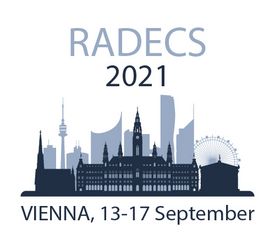F-1: A Soft-Error Hardened by Design Microprocessor lmplemented on Bulk 12-nm FinFET CMOS
L. Clark1, A. Duvnjak1, M. Cannon2, J. Brunhaver1, S. AgarwaI2, J. Manuel2, M. Marinella2
1 Arizona State University, USA
2 Sandia National Laboratories, USA
A radiation hardened microprocessor design implemented on a 12-nm bulk finFET CMOS process is presented. The processor uses a combination of circuit redundancy and micro-architecture for hardening.
F-2: Analyzing Scaled Reduced Precision Redundancy for Error Mitigation under Proton Irradiation
L. Garcia-Astudillo1, A. Lindoso1, L. Entrena1, H. Martín1, M. Garcia-Valderas1
1 Universidad Carlos III de Madrid, Spain
We propose a Scaled RPR approach for multi-stage circuits and analyze mitigation tradeoffs. FFT designs were tested with low-energy protons and fault injection. This approach achieves error mitigation with good precision, while reducing the overhead.
F-3: SEU Mitigation on SRAM-Based FPGAs through Domains-Based Isolation Design Flow
A. Portaluri1, C. De Sio1, S. Azimi1, L. Sterpone1
1 Politecnico di Torino, ltaly
We developed a domain based isolation design flow for the mitigation of SEU effects an SRAM-based FPGAs. Fault injection experimental analysis an TMR circuits mapped on APSoC demonstrates an improvement of 44% versus traditional mitigation techniques.
F-4: Dual-Core Hybrid Multi-Threaded Lock-Step for Soft Error Mitigation
M. Peña Fernández1, A. Serrano-Cases2, A. Lindoso3, S. Cuenca-Asensi2, L. Entrena3, A. Martinez-Álvarez2
1 Arquimea lngeniería SLU, Spain
2 University of Alicante, Spain
3 University Carlos III of Madrid, Spain
A new hybrid soft error mitigation technique for multi-core processors, validated with low energy proton irradiation, based an multi-threaded lockstep and a custom hardware interfacing the trace port, is presented.
PF-1: Model-Based Design Code Generator Effects on Codes Reliability
L. Tansini1, P. Rech1
1UFRGS, Brazil
We evaluate the impact of safety-critical Model-Based Design (MBD) code generation tools in programs reliability. We compare Manual, Simulink, and Scade implementations. ln general MBD tools reduce the SDC rate but increase the DUE rate.
PF-2: Fail-Reason Capturing Hardware Module for a RISC-V Based System on a Chip
S. Thomet1,2, S. De-Paoli1, F. Ghaffari2, J.-M. Daveau1, V. Bertin1, F. Abouzeid1, O. Romain2, P. Roche1
1 STMicroelectronics, France
2 ETIS Lab - ENSEA, France
This paper presents a fail-reason capturing intellectual property. lntegrated in a system-on-a-chip, it provides diagnostic information about the origin of failures thanks to the combination of trace events buffering and error detection with triggering mechanisms.
PF-3: Machine Learning as an Alternative to Thresholding for Space Radiation Fault Detection
A. Dorise1, C. Alonso1, A. Subias1, L. Travé-Massuyès1, L. Baczkowski2, F. Vacher2
1 LAAS-CNRS, France
2 CNES, France
This paper describes a new method to detect high current event caused by space radiation. Results of machine learning algorithms used on data sets created for this particular study are discussed.














